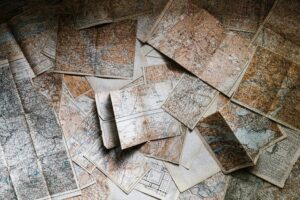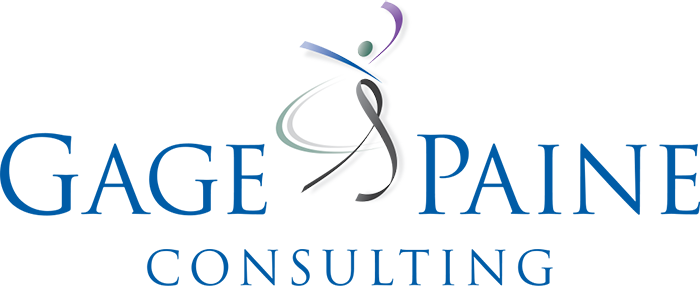Finding Our Way Together
 Several years ago, in the short period of time I ran regularly, Peter and I went on a running cruise in Alaska. We gathered with a group of about 90 runners and some walkers with the plan to run four times during the week. The first ‘race’ was a simple 5K around and around on the deck while we were at sea. Luckily it was a smooth day, but our running surface was clearly moving at times. Two other days we ran through stunningly gorgeous Alaskan wilderness areas.
Several years ago, in the short period of time I ran regularly, Peter and I went on a running cruise in Alaska. We gathered with a group of about 90 runners and some walkers with the plan to run four times during the week. The first ‘race’ was a simple 5K around and around on the deck while we were at sea. Luckily it was a smooth day, but our running surface was clearly moving at times. Two other days we ran through stunningly gorgeous Alaskan wilderness areas.
The fourth race was styled after the Amazing Race. We were in the little town of Sitka, a former Russian community. The tour organizers gave us a tourist map of the community, and a list of four places, all on the map to find in order. And off we went in teams of two. That’s when we learned that many people can’t read maps.
There were two high schools in Sitka, each one named on the map, one to the far right of our starting place and one to the left over the bridge we were standing under. The one to the left had the right name on it, so most of us headed up onto the bridge and started toward it. One team of two ignored all that and went to the one on the right. We never did learn what they were thinking.
Our final stop was the grave of a Russian princess in the graveyard near the center of town. About half of the teams went to the entrance and began reading gravestones. The rest of us went to the short street near the back of the cemetery named “Princess Way” and followed it to the grave which was clearly marked as something to see on the tourist map.
But my favorite was the second stop, the Orthodox Cathedral. It was clearly marked on the map and, after finding the right high school, as Peter and I came back over the tall arching bridge we looked in the direction indicated on the map and saw a steeple where we thought it should be. So, we left the bridge and ran that way, right to the cathedral. A good three quarters of the group ran right past it. In fairness, it was a small clapboard building and looked nothing like a European cathedral, but it did have a sign, a steeple, and an onion dome. And it was in the same place marked on the map.
Don’t get me wrong, I love the GPS map on my phone. It’s much safer than messing with a paper map to have Siri or Alexa, or if you change the voice, someone with an English accent named Nigel, tell you where and when to turn in an unfamiliar place. Traveling by myself as I have done often in my work the past few years, I’m grateful for clear directions to and from airports, hotels, and campuses. But I miss paper maps.
Paper maps help me locate myself in space in ways the small picture on my phone never does. Paper maps make clear that there are multiple ways to get where I’m going. It helps me see how to explore along the way, even if are often quicker options with fewer turns. Maybe I want to take some interesting turns.
Even before the Alaskan trip, I began to learn more about maps. I’ve learned that every map we see is result of decisions made by the map maker. And that’s true whether you are trying to make a globe flat to print or drawing a map to show people your town or the way to your house. Map makers choose what to include and what to exclude. Maps are symbols of reality.
Maps are created by people who have been there (wherever there might be) to inform and guide others who come later. They help us find our way from here to there using the tools made by others. There are other map-like things that do this for us. A meeting agenda is a map of the content we are going to cover in a particular meeting. It puts topics in a certain order, chosen by the person who called the meeting.
A syllabus is a map created by the professor who knows the subject matter in depth and has created a way to learn part of that subject matter by choosing what students will cover. By necessity it leaves out much of the information on the topic. Teachers, the map makers, help us learn our way through and to information covered by the course.
Mentors serve as guides through experiences they have had but we have not. The best help us learn what goals we might choose, define how to achieve that, and miss out on some of the mistakes others have made in trying to do something similar.
Now many of us find ourselves in uncharted waters. We’re used to rules changing whether federal or state laws, administrative procedures, zoning laws, or organizational processes. Usually though, we have some notice that the changes are coming, may have even had some input into the changes being made. In many parts of our organizational lives things have changed and it’s unclear what the end result will be or even what the purpose might be. It’s not that we can’t read the map, it’s that the map keeps changing or is non-existent. It’s more than a little disconcerting.
So, how do we find our way without GPS or a map or even an agenda? The reality is that we need each other when life is confusing, now or any other time. How are we finding people who need help and bringing them along with us? Are we asking others for help? Each of us has knowledge and experience that can help us find our way forward. Sharing that knowledge and experience will help us find new ways in chaotic times. Then we have a responsibility to create maps for others to help them find their way when times are difficult in the future. What are you learning and how are you sharing your wayfinding? It will take all of us working together to locate ourselves in time and space.
Take care,
Gage
